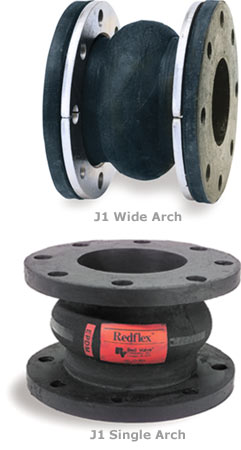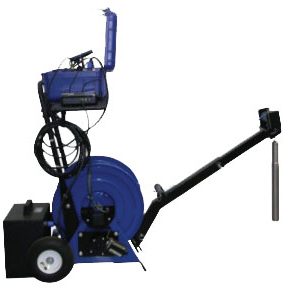Descripción
EXPANSION JOINTS
Expansion Board
The expansion joint is part of our product line, category subcategory Pipelines, Pipes and Fittings expansion joints.
The common expansion joint is used to compensate for pipe movement and vibration. Building sets is very similar to a heavy-duty truck tires: layers of high quality elastomers are reinforced with steel wires and synthetic fabrics.
The inner layer forms a tube that extends inside the joint, and in the face of the end flanges. This layer is chosen according to their chemical compatibility and abrasion resistance and temperature rating for the process material. Expansion joint is supplied with a solid lining for maximum chemical resistance.
The middle layer contains the joint bias layers of synthetic fabric reinforcement that gives the whole form and degree of pressure, and a layer (s) of wire reinforcement for added strength, the outer layer of the joint is chosen to be compatible with the environment in which the whole is to be installed, usually neoprene or butyl. This allows the joint to cope with occasional contact with oils, corrosion and wear.
Expansion joints have full face integral flanges that eliminate the need for additional meetings during the installation of the whole. The flanges are drilled to mate with ANSI 125/150, with special perforations available on request. Galvanized or stainless steel retaining rings can be provided to protect the flange and distribute forces evenly. Joints can also be manufactured to comply with the coast guard and military standards.
Expansion joints are available with a single arch, double or triple arches arches to meet face to face and movement requirements of the installation. The arches, along with the flexibility of the elastomer construction allows the J-1 to relieve stress in piping systems due to thermal expansion and contraction, and movement and vibration. Special design multiple-arch, full of bows and large bows are also available.
Features:
• Relieve stress pipelines, noise and vibration.
• permit axial compression and elongation.
• Permission lateral and angular movement.
• They are corrosive and abrasion-resistant elastomers.
• Full Face integral flanges, no gaskets
• sizes 1 “to 108”.
• Heavy, steel wire reinforced construction.
• Made in the USA.
Building materials:
• Control rods retaining rings, galvanized steel and stainless steel.
• Elastomers:
– Class I – Up to 180 ° F
Pure rubber and rubber, neoprene, Hypalon, Viton lined.
– Class II – Up to 250 ° F.
– chlorobutyl, EPDM, Viton -lined, Teflon-lined.
– Class III – Up to 400 ° F.





